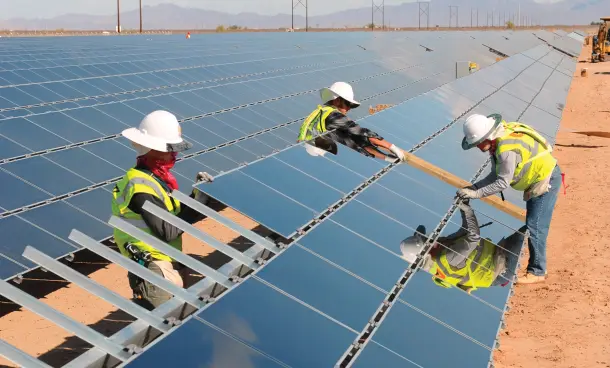Asia – With an estimated 50 000 tonnes of solar panels wearing out in 2015, a team of South Korean researchers and scientists has developed a sustainable process to reclaim silicon wafers from old photovoltaic units for use in the manufacture of new ones.
The approach adopted by the Korea Electronics Technology Institute and the Korea Interfacial Science and Engineering Institute is the first of its kind that does not use highly toxic chemicals such as hydrofluoric acid, according to researcher Nochang Park.
The panels are first heated to 480°C in a furnace, thus vaporising the glue that holds the silicon wafers inside, he has explained to Chemistry World magazine. A key discovery was that no wafers break during the heating process if the temperature is ramped up by exactly 15°C per minute.
Once an unbroken wafer has been removed from the panel, its silver electrode is stripped from the top surface using nitric acid. The anti-reflective coating, emitter and the p–n junction layers are then pulverised in a grinding machine. Finally, potassium hydroxide etches away the aluminium electrode from the rear side of the wafer.
Solar cell waste will ‘increase dramatically’ in the years to come, says Park, owing to the millions of panels now being installed with an average lifespan of 25 years.
Don't hesitate to contact us to share your input and ideas. Subscribe to the magazine or (free) newsletter.



